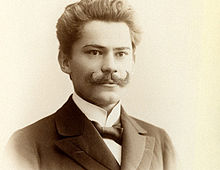Jan Szczepanik
Jan Szczepanik was a Polish inventor, with several hundred patents and over 50 discoveries to his name, many of which are still applied today, especially in the motion picture industry, as well as in photography and television. Some of his concepts helped the future evolution of TV broadcasting, such as the telectroscope or the wireless telegraph, which greatly affected the development of telecommunications. He died in Tarnw in the Second Polish Republic.
Szczepanik was born in the Austrian Partition, in the village of Rudniki near Mociska but relocated as infant with his mother to Zrcin in the industrial region of Krosno, where he grew up. His birthplace was controlled by AustriaHungary between 17721918 after the partitions of Poland. Szczepanik graduated from a teachers college and spent a lot of time reading scientific literature and journals. He moved to Vienna after his attempt to advance the Jacquard loom from France was rejected by some local weavers for fear of losing business. His knowledge of fabric however, enabled him to create the first ballistic vest using silk. Spanish king Alfonso XIII awarded him an order for its invention. Szczepanik was granted awards by other royal courts. The Emperor Franz Joseph of Austria relieved him of mandatory military service fascinated with photosculpture known also as photoplastigraphy introduced to him by Szczepanik. It was based on an idea patented in 1859 by Franois Willme for prod
Source: Wikipedia

